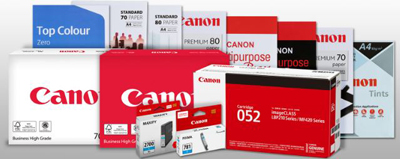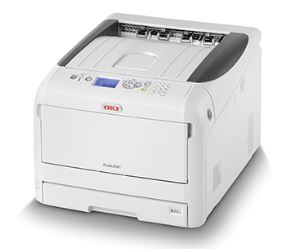Pick printer paper prudently (part one)
Posted on Tuesday 27 November, 2018 
The old Castrol TV ad proclaimed "oils ain't oils." Similarly, paper ain't paper.
We'll start with ordinary A4 office papers, leaving the discussion of specialty papers to a subsequent post.
Some homes and offices get through quite a lot of paper, especially when people are in the habit of producing multiple printed drafts of their projects. This makes it tempting to pick the cheapest paper in order to save money, but it's not really that simple.
If your printed documents are destined for the hands of clients or teachers, realise that the quality of the paper you select says something about you. While standard office paper is usually 80gsm (grams per square metre - a measure of the paper's weight), there are variations in smoothness and how white the paper is. Generally speaking, the smoother and whiter the paper is, the better your document looks.
This is particularly true when laser-printing pages that include colour photographs or complex graphics. The reason is that - with very few exceptions (eg, certain Oki models that use white toner) - any white areas are the result of not putting any ink on the paper. That's also true for inkjet printers, but the difference is that laser printing works by melting plastic toner powder onto the surface of the paper, and fused toner has a smooth and therefore quite shiny surface. The glossier the paper, the less contrast there is between printed and unprinted areas.
Inkjets have a different problem in that the inks are not completely opaque and therefore off-white paper affects the finished colour.
Another inkjet issue is bleeding around the edges, giving a somewhat fuzzy appearance. This generally happens when the paper absorbs the ink too readily, causing it to spread instead of drying where it was deposited.
Types of inkjet inks: dye and pigment
However, there are two basic types of inkjet inks: dye and pigment. Dye is like fabric dye in that it is a liquid that soaks into the material, whereas pigment dye is more like a very thin paint where the colour comes from particles that remain on the surface. Any paper designed for inkjet printing, therefore, works at least reasonably well with dye ink because it absorbs the liquid. But the absorbent coatings on certain inkjet papers partially repel pigment particles, resulting in images that smear easily even after drying. This is not an issue with 'office' papers in our experience, but it is worth keeping in mind.
In general, pigment inks last longer without significant fading, especially when exposed to daylight. But dye inks can deliver brighter colours as well as a wider colour gamut (possibly explaining the use of as many as ten ink colours in some pigment ink printers).
.png)
Examples of pigment inks include Canon's Lucia system and Epson's DuraBrite and UltraChrome inks. Dye inks are widely used, but include Canon's ChromaLife 100 and Epson's Claria systems.
Some printers use a combination of dye and pigment inks, typically dye for colour (especially photo) printing, and pigment for black-only documents. Examples include Brother printers using Inobella inks, and Canon's Pixma range.

Because of this complexity, it's a good rule to check to see whether the paper manufacturer recommends the particular product you're considering for use with laser printers, inkjets, or both. And when buying a different brand of paper for the first time, start with a single ream so you can check that you're happy with the results before buying by the carton. There's no point trying to save a couple of dollars and being stuck with $25 worth of paper that you don't want to use.
It's better to avoid having too much paper in stock - it is bulky and prone to damage and deterioration - so try not to buy it too far ahead of use. Store unopened reams stacked neatly on flat surfaces in a cool, dry environment to help avoid bending and curling, which can cause paper jams.
Once you've opened a ream, it's best to load it all into one or more printers immediately, but that's not always possible as many home and small business printers have paper capacities of 250 sheets or even less. In such cases, store the unused paper in a resealable plastic bag to keep it dry, and store it flat.
Recycled paper is a lot less obvious than it used to be, and with some brands it can be hard to tell the difference even in a side-by-side comparison. Choices include 100% recycled, 100% new, and somewhere in between.
Another area where papers differ is how dusty they are. All papers shed some dust and fibres, but the more they shed, the more likely you are to run into printer problems such as paper jams. So keep the inside of your printer clean in accordance with the manufacturer's instructions, and consider switching papers if you're seeing a lot of white dust - but be aware that some types of paper (particularly some that are intended for art use rather than regular office purposes) are inherently more dusty, regardless of brand.
In a future post, we'll turn our attention to photo paper and other specialty printing papers.





Any comments?